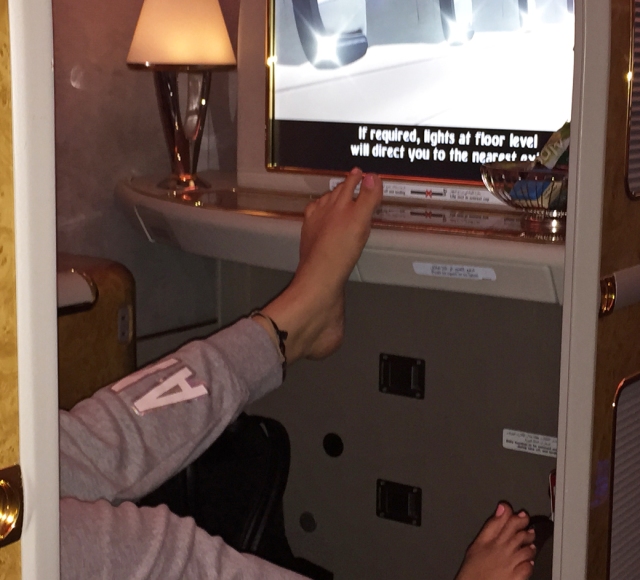

It seems every few weeks there is another news story about a person being denied boarding for wearing something that in the view of the airline is inappropriate. These standards vary and are quite subjective. Some middle eastern airlines will deny any passenger, male or female, for wearing shorts. Offensive slogans are treated with a large amount of variability. Skimpy clothing likewise. This is not an article about this, though. Like other articles written here the focus is on safety.
While flying is safe, things do happen. One of the most dangerous events is a rejected takeoff, where brakes can get so hot that they literally catch fire. This would likely lead to an emergency evacuation (remember to always wait for the crew to call for an evacuation before taking any action!). Many other scenarios can also lead to an evacuation. Hard landings, emergency return after a severe problem, windshear, icy or slippery surfaces, onboard fire of some sort, etc. Going down an escape slide onto a hot ramp and running far enough away to be safe from flames would not be an unlikely scenario. There may be debris that needs to be navigated, sharp objects that need to be crossed, plus possibly areas of burning fuel.
Now consider, what would you want to be wearing in this circumstance? Shorts (or a skirt)? Any exposed skin that touches the side of an escape slide will be severely burned by the friction as you go down (for this reason you keep your arms pulled in and elbows up). I learned this the hard way during a recurrent training session early in my career. I let one of my elbows momentarily touch the surface and I ended up with what looked like “road rash” (a term from motorcycles that describes how skin looks after scraping along pavement). Very painful and it took a long time to heal.
Consider how sandals (or worse, flip-flops) might fare in such a situation, or worse, being barefoot. Remember, if something like this happens you do not have time to switch shoes. You also might not have time to retrieve shoes that you’ve removed. Enroute, once up and away, fine. There will be several minutes before landing. However, we see people removing shoes as soon as they sit down. Not wise.
My recommendation is clothing that will not melt (no polyester or similar fabrics), long pants and real shoes. It just might save your life.
After writing this, David Lomax offered the following excellent follow.on advice (thank you David!), with permission, here it is:
Always wear “sensible clothing” keep your footwear (appropriate and not flip flops etc) on until well established in the climb and if it is removed, then make sure it goes back on at start of descent; running across uneven terrain or an area with debris won’t be any fun if you are barefoot. I also recall being told many years ago, avoid nylon underwear because it gets very hot even through clothing and it also builds a significant static charge when going down the chute.
Always keep your passport, wallet and phone on you (don’t stow them anywhere in those natty little storage areas) using the same timeline – you never know when you need to get off quickly. If you do have to get off quickly, you may need to prove who you are, because it may be somewhere that is a but funny about passports/visas etc, you may need cash or cards and you need to tell people that you are safe (providing you can get a cell signal). By all means, once safely airborne, then stow them safely but make sure you know where they are so you can retrieve them; pref without leaving your seat.







